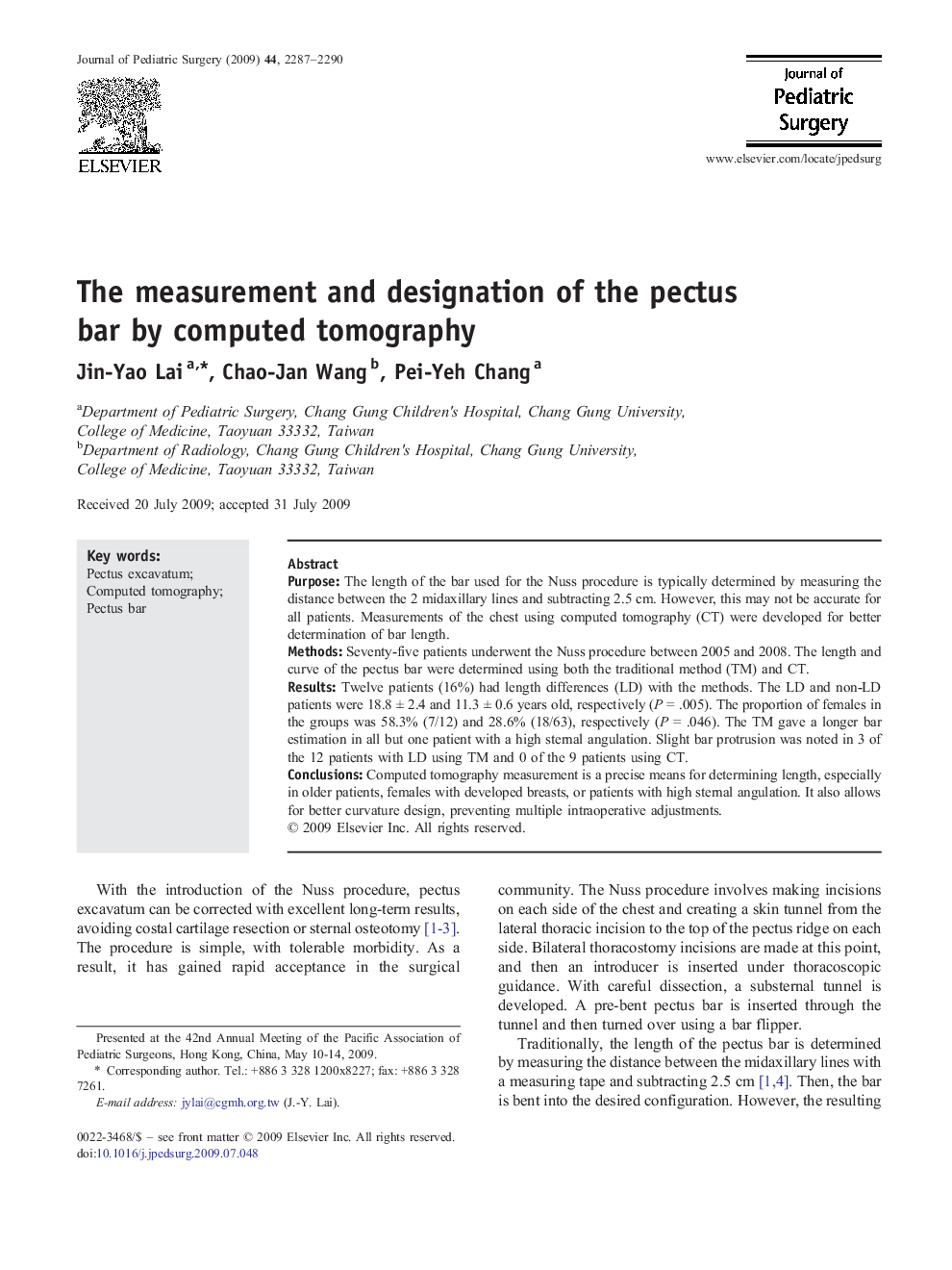| Article ID | Journal | Published Year | Pages | File Type |
|---|---|---|---|---|
| 4157817 | Journal of Pediatric Surgery | 2009 | 4 Pages |
PurposeThe length of the bar used for the Nuss procedure is typically determined by measuring the distance between the 2 midaxillary lines and subtracting 2.5 cm. However, this may not be accurate for all patients. Measurements of the chest using computed tomography (CT) were developed for better determination of bar length.MethodsSeventy-five patients underwent the Nuss procedure between 2005 and 2008. The length and curve of the pectus bar were determined using both the traditional method (TM) and CT.ResultsTwelve patients (16%) had length differences (LD) with the methods. The LD and non-LD patients were 18.8 ± 2.4 and 11.3 ± 0.6 years old, respectively (P = .005). The proportion of females in the groups was 58.3% (7/12) and 28.6% (18/63), respectively (P = .046). The TM gave a longer bar estimation in all but one patient with a high sternal angulation. Slight bar protrusion was noted in 3 of the 12 patients with LD using TM and 0 of the 9 patients using CT.ConclusionsComputed tomography measurement is a precise means for determining length, especially in older patients, females with developed breasts, or patients with high sternal angulation. It also allows for better curvature design, preventing multiple intraoperative adjustments.
